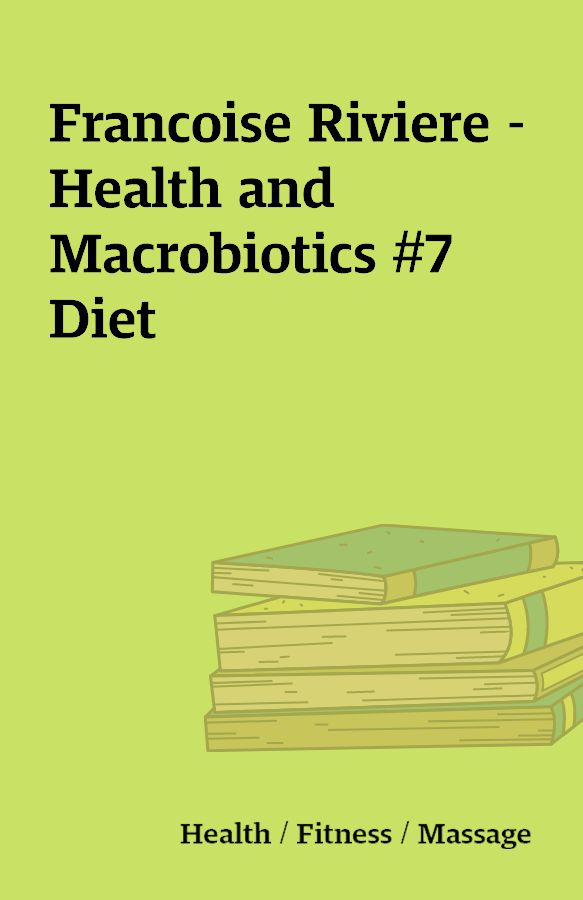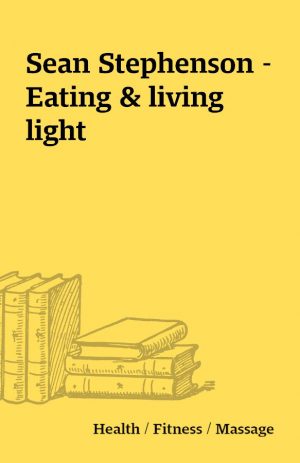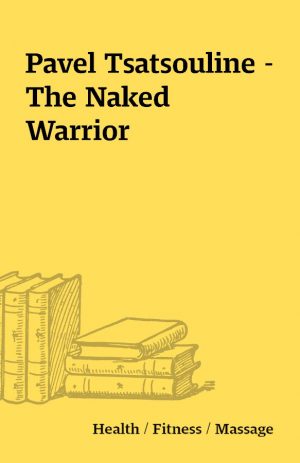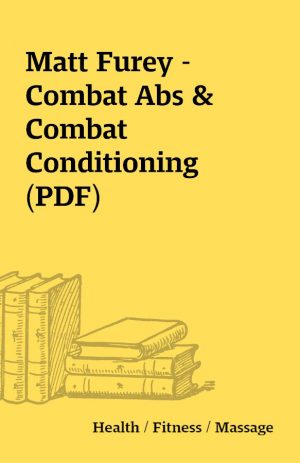Francoise Riviere – Health and Macrobiotics #7 Diet
Francoise Riviere – Health and Macrobiotics N7 Diet
[1 Scan – 162 JPG]
Description
#7 Diet provides access to George Ohsawa’s legendary cleansing diet as found in You Are All Sanpaku and Zen Macrobiotics, multiple dietary options for variety, and clear and detailed instructions for successful application.Publisher’s PrefaceIt is with great pleasure that the George Ohsawa Macrobiotic Foundation presents Mme. Françoise Rivière’s #7Diet, the English-language translation of her classic, La Santé et la Macrobiotique, originally published in France in 1974 by the Institut Tenryu and subsequently published in 1977 and reprinted in 1996 by the renowned publishing house, J. Vrin.Mme. Rivière’s book is stated to be a complement to Ohsawa’s Zen Macrobiotics in the French-language booklist for CIMO, the Paris-based macrobiotic organization. We agree fully and feel further that not since the time of publication of Ohsawa’s work (1960) has such an important and vital addition been made to the macrobiotic literature specifically to augment Ohsawa’s writing. If Zen Macrobiotics is— as has been stated by many people around the world—the “flame” of macrobiotics, then #7 Diet is the candle. Ohsawa is undoubtedly the inspiration; Mme. Rivière’s #7Diet shows the application.We feel that the exceptional clarity of #7 Diet allows anyone—people who may be interested only in a one-time macrobiotic cleanse as well as long-time macrobiotic practitioners—to use the guidelines found here. After some study, people should also find themselves able to use Ohsawa’s principles and these dietary instructions as a model for constructing additional diets specific to their own personal purpose.For those who plan to use macrobiotic principles with a certain consistency in their lives, this book clearly defines a #7 diet as an elimination diet to be used only for a specific period of time and for the purpose of removing excesses and toxins from the body. Historically, this is most important, because mistakes in application have been made in North America at times when the #7 diet was followed either as an elimination diet for exaggerated periods of time or as a health maintenance diet, which it is not.Macrobiotics is a set of universal principles that can be used for physical, emotional, mental, and spiritual benefits, both on personal and societal levels. In North America, many people discovered that the dietary application of macrobiotics could be used with remarkable success to alleviate oftentimes quite critical health conditions. As a result, many considered macrobiotics to be a something akin to a life preserver for a drowning person, and since so many were rescued, macrobiotics soon became known primarily as a curative diet. Even today, the guiding macrobiotic principles often seem to be set aside in favor of an almost fanatical hope—characterized by a blind adherence to a severely restricted diet—in the restoration of a person’s health.In this book, however, we feel that Mme. Rivière presents her material in a balanced and proper context. From our North American perspective, we find it worthwhile to keep in mind seven keys to understanding and implementing a #7 diet effectively.1—We remember that every individual is different and that results will vary from person to person and even from application to application. Nothing ever happens necessarily the same way twice. There simply is no single diet that fits everyone all the time. Mme. Riviere presents many variations of a #7 diet in the book in observance of this principle.2—We recall that the #7 diet of Zen Macrobiotics is very much the continuation of what Ohsawa called (in Philosophy of Oriental Medicine and Practical Guide to Oriental Medicine) “preparatory dietetic instructions” or “preliminary diet.” Preliminary does not mean permanent. It is an elimination diet; it is similar to a fast or a cleanse. We do not consider it to be designed to add weight, enhance strength, or to provide the building blocks for repairing damaged organs or tissues. Neither do we see it to be used for general health-maintenance. We find that Mme. Riviere uses a #7 diet for a certain application, cleansing, and also for a specific length of time (typically 3 to 10 days) in accordance with this perspective.3—As a corollary to the preceding paragraph, we consider a #7 diet to be inappropriate for those who are pregnant or nursing. In fact, it is our experience that extensive dietary change during these times can lead to complications and should be attempted only with qualified guidance. Additionally, we have found it best not to subject young children to a #7 diet without the help of a qualified care provider.4—Anything that can be of benefit can also be harmful, especially if it is done too long or is practiced with too much severity. Following a single diet, especially an eliminative one, for an excessive period of time can lead to debilitating problems. This was already keenly apparent to Ohsawa himself.5—In our experience, we have found that dietary change may result in what is termed a “discharge.” One of the purposes of a #7 diet, its variations, and the other diets presented in this book is to enhance the body’s natural ability to rid itself of toxins. The discharge process can be intense or tame depending on what is being discharged and the severity of one’s imbalance. In adopting a #7 diet, one may experience some level of discomfort. However, if the discharge becomesunbearable or severe, obviously it is time to stop or at the very least to consult with a qualified practitioner.6—In our opinion, the objective of following a #7 diet is for cleansing. It can be used either as a preventive modality or to effect a change in an existing condition. We consider it to be entirely reasonable to vary the practice or to stop the diet entirely and seek assistance if one’s condition becomes agonizing. In the application of #7, we do not subscribe to the notion of “no pain, no gain.” Pain is characterized by inflexibility; Mme. Rivière notes specifically that, “#7 should be supple.” Thus, a change to a less strict version of a #7 diet or to one of the other diets listed in the book will sometimes slow a discharge to a more manageable degree and make the process more smooth.7—It is most important that one honestly evaluate one’s condition daily, if not continually. In this way, one learns from any mistakes, develops an intuitive understanding of the process the body is undergoing, and is consequently able to judge whether the process is proceeding smoothly and at what point a change or a halt is appropriate. We have also found it to be generally the case that those persons who feel that their condition often requires a #7 diet might need to have a more thorough evaluation done by a qualified health care professional.One other issue requires mentioning, that of liquid consumption. Since the objective of a #7 diet is to drive out excesses and toxins from the body, limiting food choices is one way this is accomplished. Limiting liquid intake is another. If one’s system can tolerate minimal liquid consumption, this is one of the most effective ways to re-establish equilibrium. In our opinion, this restriction is not meant to be continued after the cleanse is over. Just as one does not stay in a sauna for an excessive length of time, one discontinues a #7 diet after 10 days at the most. The diet is widened, using macrobiotic principles and guidelines if desired, and normal liquid consumption is resumed. There has been much confusion within macrobiotic circles regarding the proper amount of liquid intake.Since drinking “as little as possible” was advocated by Ohsawa himself, many people became virtually fixated on minimizing liquid intake in the early days of North American macrobiotics. Ohsawa’s further directions to limit liquid consumption for a period of only “one or two weeks, or as much as possible” (quoted by Mme. Rivière in the book) should not be overlooked. To do so may contribute to dehydration among those who restrict consumption too haphazardly or too severely. Similarly, the simple advice to drink according to thirst (a mechanism that can be shut down by one’s will power) or by number of urinations needs to be considered and thoroughly understood.We feel that the number of urinations, for example, in and of itself is not a definitive indication of the general condition of an individual, but we note that an elevated number (say, more than 6 times per 24 hours) may be cause for concern.More than a half-century of macrobiotic practice in North America confirms that a strict long-term tea regimen as in the Far East of Ohsawa’s lifetime is not conceivable. A certain level of water consumption is required for health, especially among meat-consuming populations. The Ohsawan suggestion of the mid-twentieth century was to minimize the total amount of liquid for the purpose for eliminating toxins during the 10 days of a #7 diet. He recommended restricting consumption to 3 cups of tea per day for the #7, the tea itself being dehydrating in nature. Today, however, we suggest that if persons feel that they need to drink water during a #7 (or other macrobiotic) diet, they consider drinking 1/2 hour before meals and/or 2 hours after meals. They may also add a pinch of salt to the water. Naturally, the amount of water varies from person to person and from time to time. Thus, the reader will note that Mme. Rivière makes no specific recommendation concerning the amount of daily water consumption. In this, she follows the lead of Ohsawa, who, while also issuing no idealized amount, noted the importance of proper water intake.The reader will similarly remark that Mr. Stéphane Carmona, Mme. Rivière’s colleague in Paris, recommends in his introduction to the present work to proceed into a macrobiotic diet with a sense of progressive transition. This is based on his 40 years of personal experience.Another major benefit of this book is the inclusion and definition of what Mme. Rivière terms “specifics.” These are the small amounts of food items that are used in order to obtain the maximum benefits from the #7 and other macrobiotic diets. The reader will note that some foods are used as “specifics” when used in smaller quantities and as vegetables or seasonings when used in larger proportions. In all cases, the macrobiotic principle of “quantity affects quality” applies.The next 10 days may change your life forever. Mme. Rivière’s suggestions to read inspiring texts such as Zen Macrobiotics while chewing each mouthful of food and to maintain an active life-style, if one’s condition allows it, are worthwhile. Keeping a diary of each time a #7 or related diet is followed is also a good idea. Readers are encouraged to e-mail or write her or us with questions or concerns that they may have.http://www.amazon.com/Diet-Macrobiotics—Accompaniment-Ohsawas-Macrobiotics/dp/091886058X/Soft cover originally published in French in 1997. It has been translated and published in English in 2005. From the back cover “#7 diet provides: access to George Ohsawa’s legendary cleansing diet,multiple dietary options for variety, clear and detailed instructions for successful application.” Book includes an index and an interesting set of black & white photos of the author as she ages from age 20 to 85.Product Details Paperback: 160 pages Publisher: George Ohsawa Macrobiotic Foundation (2005) Language: English ISBN-10: 091886058X ISBN-13: 978-0918860583Please contribute back by OCRing *and* Spellchecking/Proofreading (!) this book. I recommend ABBYY Finereader 10 for doing this work in a relatively easy way. There are other applications as well. The important thing is to spellcheck and correct any mistakes the automatic software run did – often people just run automatic conversion and upload here a pdf that has many mistakes and/or can’t be converted to other digital formats. If you start to do the process please leave a comment here so the effort won’t be duplicated by others. Thank you.
You must be logged in to post a review.






Reviews
There are no reviews yet.